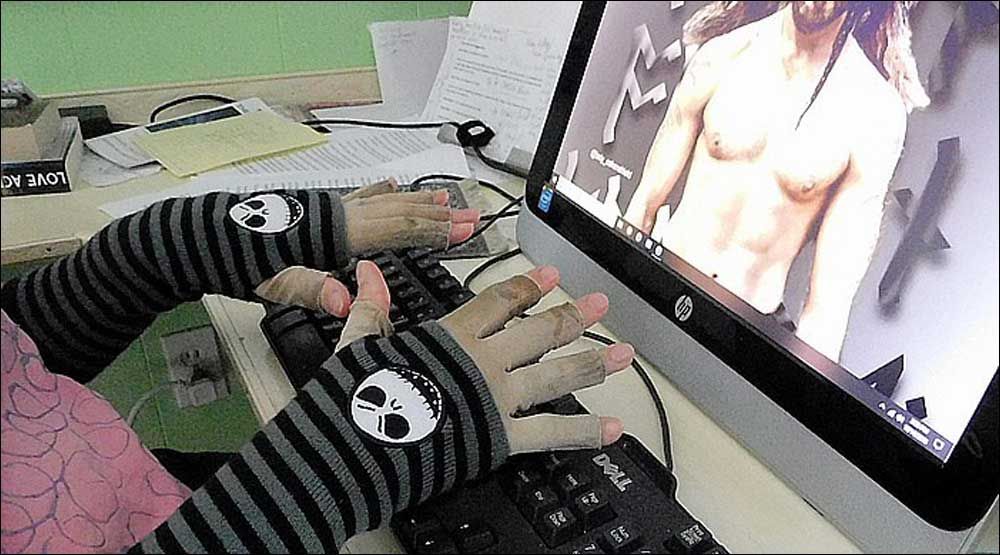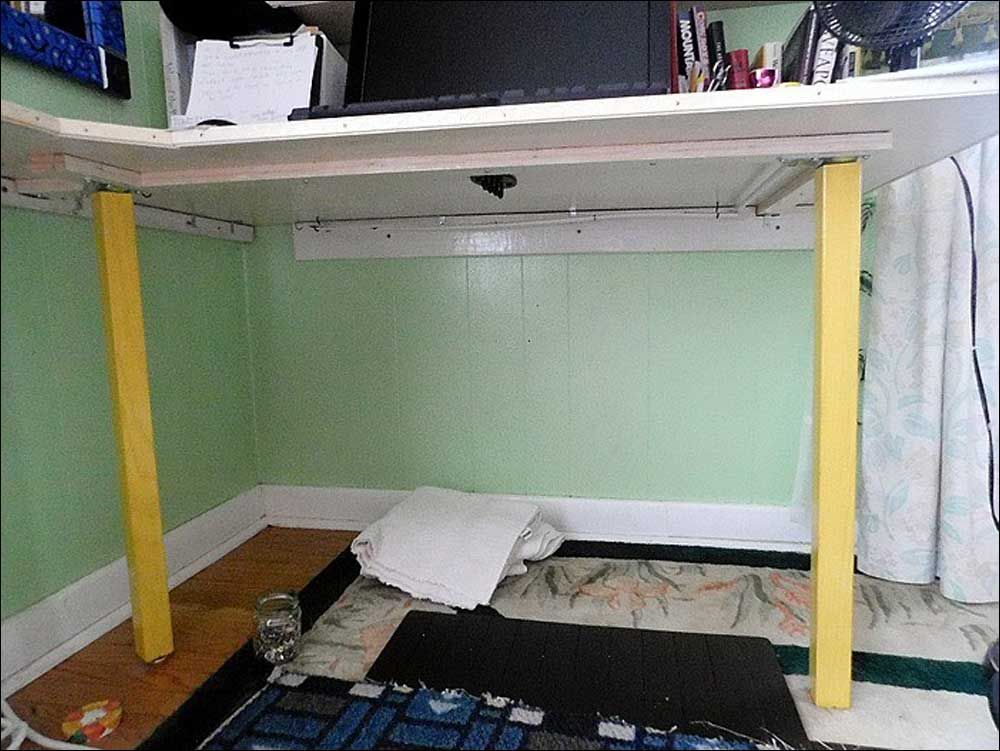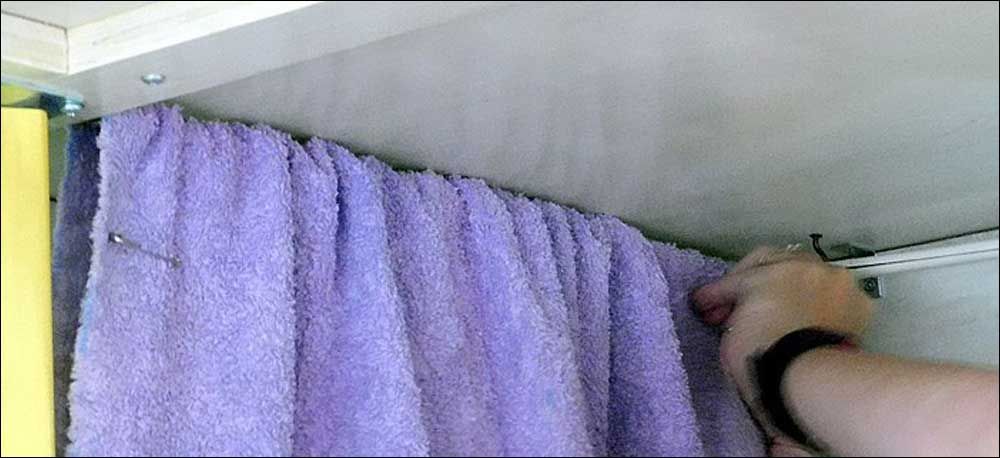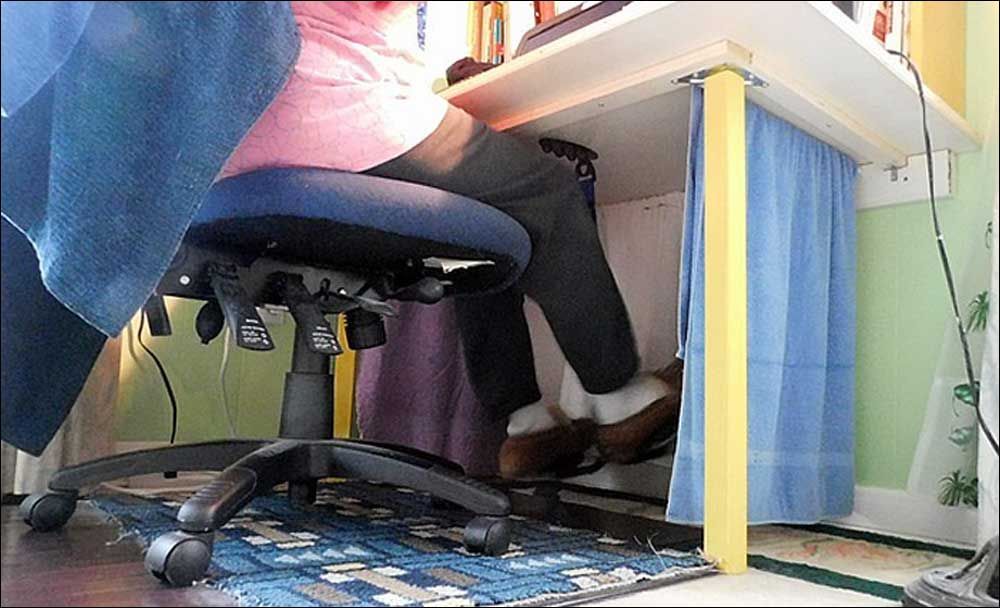Keeping Your Writing Space Warm

I think a lot about resilience and sustainability and how to do things better. Here’s something we (me and my dear husband) did recently that may help you. I started this particular project back in June of 2018 when I reviewed my home heating bills for the 2017/2018 winter. I was horrified. It wasn’t that cold of a winter here in central PA; we have endured much colder ones. We burned 355.7 gallons of home heating oil at $3.31 per gallon. We spent $1,177.22 to heat our 2,000-square-foot house. This is the most oil we’ve burned since the 2003/2004 winter when we burned 392 gallons. Back then, oil was $1.45 a gallon, costing us $567.21.
I shivered through that entire winter at my writing desk located in the coldest corner of our living room. I had to do something to improve my situation for future winters and it sure wasn't going to be sending more money to Keystone Heating Oil.
As you know if you read my book (Suburban Stockade), we’ve done all we can to heat our house efficiently. We insulated, insulated, and insulated. We added multiple layers of cloth over each window to trap heat overnight. We keep the furnace in A-1 condition for maximum efficiency and set the thermostat low. So why, when we rarely burned over 300 gallons of oil since the winter of ’03/’04, did we use 355 gallons?
My Problem

What happened was that I had been spending more and more time writing at my desk, the new one my husband built in one corner of the living room. My writing desk consists of a sheet of plywood attached to two walls and two table legs. This corner gets cold. It faces two outside walls and doesn’t get sunshine for long because of its orientation towards the morning sun.
Unfortunately, I am the person in the family who gets the coldest. I put up with the cold for as long as I could, shivering in my corner while wearing my knit hat, compression gloves, slippers, multiple layers of clothing, and lap blanket. Eventually, I couldn’t stand it anymore. I broke. I raised the thermostat a few degrees. It worked. I still wore all my layers, but I wasn’t freezing anymore. I wouldn't say I was cozy, but I was able to tolerate the winter temperatures.
I paid for two tanks of home heating oil like always; gasping at the price as I wrote the checks. But I didn’t add up how much I spent until July when I knew for sure that I was done with the season, and I was getting ready for the next one.
Historically, our biggest bill came the first winter when we bought our completely un-insulated house back in 2001. After that dreadful bill, I had my dear husband, Bill, suit up and do battle. He attacked the attic with pink insulation, attached 2 inches of rigid insulation on every bare wall, and caulked shut all the gaps. That wasn’t all we did. I sewed and installed insulated drapes on all the windows. We caulked and weather-stripped and replaced storm doors. We replaced some windows with better, more air-tight ones. We insulated the unfinished basement ceiling and replaced the finished basement’s carpet with thick hotel-grade carpet and the heaviest, thickest pad the carpet store sold. We placed rugs on the floor, down comforters on the beds, and blankets on furniture. I made quilts for the front door, windows, and beds.
We did all we could insulating the house; now I needed a way to keep me warm in the living room while writing. I had two options:
1. Reduce the thermostat back to its usual position and insist everyone dress appropriately for the weather; i.e. put on a damn sweater if you’re cold. Since I already dressed for the weather, I would have to struggle along, freezing, while my fingers turned to icicles and my feet into blocks of ice. Sadly, doing this made my writing suffer and since writing helps pay the bills, this wasn't a viable option.
2. Warm the space I’m working in. What we didn’t want to do was turn up the thermostat to maintain my comfort for another winter. That two-degree difference (or more!) burned more than 50 gallons of oil at $3.31 a gallon. Nor did I want to install a space heater because I don't have many available outlets and I didn't want to pay for the added electricity. I found the answers at Low Tech Magazine and its sister website No Tech Magazine . Both sites preserve information about how our ancestors lived more efficiently with limited amounts of money. They both recommended heating only where you are rather than an entire building.
Here’s what I did to warm myself without paying for the privilege of warming my house:
Wear Gloves
I use compression gloves for my hand pain, but they don’t do a good job keeping my hands warm. But my next-door neighbor was moving. She asked if I wanted her pair of Jack Skellington fingerless gloves? I thought for a moment — it was hot that day and did I want to feel hotter? — then came to my senses and said yes.
They work like a dream. My hands are warm, my wrists are warm, they slide right over the compression gloves, and my fingers are free to type. Despite my fingers being covered only by the compression gloves, they are not cold. Jack is keeping my hands warm and that keeps my fingers warmer. These free fingerless gloves are a permanent addition to my winter work wardrobe, along with my coat, my knitted watch-cap, and my lap blanket. I knew though that fingerless gloves wouldn’t be enough when the deep winter comes and the house gets colder. Sixty-four degrees isn’t very warm, especially when you’re sitting still, in one of the coldest corners of the house. Let me note now that my screensaver (seen in the first picture) despite being of Thorin Smokenshield, doesn't keep me warm the way Jack does.
Insulate the Desk

The underside of the desk is the coldest part of the room. The poorly located living room vents can’t heat it, but my legs can. If I could trap that heat, my legs won’t get so cold. In other words, if I insulate this space where my legs go, I could solve my problem. If you’ve seen a traditional desk, you know they are not open on all sides. They are enclosed by drawers and have a front panel that hides the legs. This keeps the user warmer in an otherwise very cold house. My desk consists of a sheet of plywood mounted to the wall and supported by legs. Thus, we needed to insulate my desk, but without spending any money or causing a moisture problem.
We considered installing temporary foam panels against the walls, which we’d have to buy, store in the off-season, and run the risk of moisture damage. Nope.
We thought about quilted panels which I would have to sew and then store in the off-season.
Pros: They could be hung in a way to create air space between them and the walls. They also wouldn’t cost any money since I could use some of my stash.
Cons: I didn’t have the time; I was busy sewing cloth grocery bags for our book shows. Quilted panels can also be troublesome to wash, if they aren’t densely quilted – taking still more time to sew -- and there’s still the risk of moisture and mildew since they are separating a cold space from a warmer one leading to condensation. Room had to be found to store them in the off-season.
Answer: Old bath towels. We have an ample supply. No time needed to be spent on getting them ready. They can be easily washed on an as-needed basis. They already have a storage place in the downstairs yellow bathroom. Installation would be easy: mount cup hooks under the desk, drape towels over wooden dowels and adjust so they wouldn’t touch the floor and allow for more drying air flow. If I needed thicker insulation, it would be easy to add another towel.
So that’s what we did. Bill mounted cup hooks under the desk on three sides to surround my legs. The towels are safety pinned near the top of the curtain rods so they don’t shift. They’re hung on the rods so they are gathered, rather than folded over. The gathering makes for more dead air space and it was easier to adjust the fit of the towel. At the end of the heating season, the towels can come down to be washed and put away, if it proves necessary. The cup hooks and rods remain permanently in place.
It took less than an hour to install. What took the longest was measuring and then adjusting the rods’ length with a hacksaw. The towels do not get in the way of my legs, even when I’m using the Hovr. The writing space is now kept warm and cozy.
You can see a bit of my Hovr in the picture below. It's what is holding my feet off the floor. A Hovr acts as a movable footrest, providing both insulation from the cold and exercise. I 'bicycle' and 'climb stairs' and 'walk' with the Hovr, keeping my lower body from suffering from too much sitting in one place. The Hovr is a much less expensive, less space-eating alternative to a treadmill desk. It is suspended from the underside of the desk and is adjustable in both height and distance from my chair. The Hovr alone turned out to be not enough to keep my lower body warm; I still had to insulate underneath the desk for maximum effectiveness.
I’ve already set the thermostat for the winter at 64 degrees during the day and 55 degrees at night. No matter how cold, I should be more comfortable. If the winter is typical, I won’t use more than 300 gallons of home heating oil. I seriously doubt if the price this upcoming season is going to be less than $3.31 per gallon.
Aftermath

Here’s my report on how it worked. I’ve now lived with my desk underskirt for over a year, including the winter of 2018/2019. The underskirt worked great. I wasn’t nearly as cold as the previous winter. I kept my thermostat at 64 degrees during the day and 55 degrees at night and did not have to adjust the heat upwards to let me write. I rarely needed my coat or my lap blanket although I keep them close by. I still needed my Jack Skellington fingerless gloves, my knit watch-cap, and slippers.
I don’t seem to be having any moisture issues and, in fact, left the towels in place year-round. This corner also gets hot in the summer because of the two exterior walls. I have pushed the side towel back towards the wall to let my fan better cool off my legs. It’s very easy to adjust towels on a rod.
You can do this too. Insulate and heat where you are, rather than your entire house. That’s the point behind wearing a sweater and throwing a lap blanket onto the couch. You’re warming yourself rather than empty, unused rooms. That costs you a lot less, leaving you with money you can use for something more important.
Comments
David Trammel
Wed, 09/04/2019 - 12:16
Permalink
Good Use Of Insulation
Nice blog post Teresa. Winter is just around the corner and it will be time to hang my sleeping bags over my windows again, and think of ways to cut my energy bill.
David Trammel
Sat, 09/07/2019 - 08:44
Permalink
Canopy Beds and Inner Rooms
Your technique brings to mind an idea I've had of making a "bed tent" for the Winter. Basically taking the a sheet and tacking one side to the wall at the headboard a few feet above the bed, creating an airspace which would hold some of my body heat. Kind of the same idea as a canopy bed.
I usually let it get down into the low 60s in most of the house during the Winter to save energy but keep one inner room, my office a bit warmer with a small electric space heater for comfort and to give the cats someplace to hang out. Back when I was first thinking of retirement and was going to build a new home, I had plans for a inner section that would be super insulated where during temperature events I could sort of hide. Your post shows you don't have to go to that extreme.
I also have sleeping bags hung over my outside windows as insulation too. You can often pick them up at garage sales cheaply.
Teresa from Hershey
Sat, 09/07/2019 - 16:30
Permalink
Canopy beds
Hi David,
Canopy beds are **old**. They probably date back hundreds of years. The idea is the same as my towels: keep a tiny space heated with body heat rather than a great big one. If you can have curtains on all four sides, you'll trap loads of heat. Don't forget the down comforter!
Teresa from Hershey